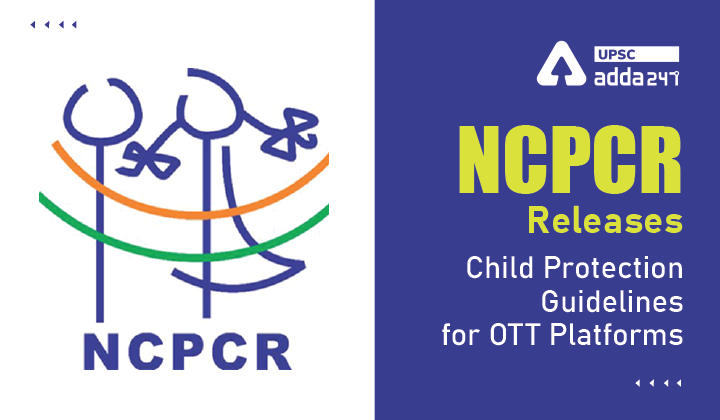Table of Contents
Children safeguarding in OTT platforms: Relevance
- GS 2: Welfare schemes for vulnerable sections of the population by the Centre and States and the performance of these schemes.
OTT platforms in India: Context
- Recently, National Commission for the Protection of Child Rights (NCPCR) has published the draft guidelines to regulate child protection within the entertainment industry, including the OTT platforms.
Child Protection Guidelines: Key points
- The recent draft increases the scope of the guidelines to cover social media and OTT platforms for the first time.
- The commission has included stringent penal provisions for violating the guidelines, including imprisonment.
- The commission also mandated that child artists and children being used in entertainment need to be registered with District Magistrates.
- Acts covered: Juvenile Justice Act, 2015, Child Labour Amendment Act, 2016, Protection of Children from Sexual Offences Act, 2012, Information Technology (Intermediary Guidelines and Digital Media Ethics Code) Rules, 2021.
Child protection guidelines NCPCR: Significance
- Increased use of children in videos across social media and in content on OTT platforms which had not been covered by the existing guidelines and this increasing influence and scope of the internet needed to be covered.
- In the absence of any monitoring mechanism, the children in the industry are at grave risk of exploitation because they lack the legal right to the earnings they generate, or safe working conditions and adequate protections via labour laws, etc.
- Participating in an adult-oriented industry, children are often exposed to unsuitable, anxiety inducing, and at times, dangerous operational hazards and situations.
- Apart from the industry-specific risks, the children are also susceptible to a plethora of other crimes against children such as sexual exploitation, child trafficking, bonded labour, etc.
Child Protection Guidelines: Key guidelines
Prior permission
- Any producer of any audio-visual media production involving the participation of a child will now need to obtain the permission of the District Magistrate where the activity is to be performed.
- Also, producers will also have to run a disclaimer saying measures were taken to ensure there has been no abuse, neglect or exploitation of children during the entire process of the shooting.
Working environment
- A child shall only participate in one shift per day, with a break after every three hours.
- The guidelines further prohibit children being cast in roles or situations that are inappropriate.
- Also, consideration has to be given to the child’s age, maturity, emotional or psychological development and sensitivity.
- Also, a child cannot be exposed to ridicule, insult or discouragement, harsh comments or any behaviour that could affect his/her emotional health and children cannot be shown imbibing alcohol, smoking or using any other substance or shown to be indulging in any sort of antisocial activity and delinquent behaviour.
- Anyone who may come in contact with children will have to submit a medical fitness certificate ensuring that they are not carrying obvious contagious disease and police verification of the staff also needs to be carried out.
- Further, no child can be engaged in any situation involving nudity.
Other important directives
- Minor: A minor, especially below the age of six years, shall not be exposed to harmful lighting, irritating or contaminated cosmetics.
- Guardian: Moreover, at least one parent or legal guardian or a known person has to be present during a shoot, and for infants a registered nurse needs to be present along with the parent or legal guardian.
- Education: The producer also needs to ensure the child’s education under the RTE Act, to ensure no discontinuity from school or lessons as well as adequate and nutritious food, water to the children during the process of production and medical facilities.
- Income: At least 20 per cent of the income earned by the child from the production shall be directly deposited in a fixed deposit account in a nationalised bank in the name of the child which may be credited to the child on attaining majority.
Read current affairs for UPSC




 TSPSC Group 1 Question Paper 2024, Downl...
TSPSC Group 1 Question Paper 2024, Downl...
 TSPSC Group 1 Answer key 2024 Out, Downl...
TSPSC Group 1 Answer key 2024 Out, Downl...
 Cabinet Ministers of India 2024, New Cab...
Cabinet Ministers of India 2024, New Cab...







